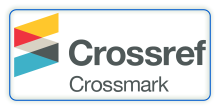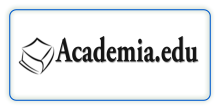PHARMACOGNOSTIC INVESTIGATION, ISOLATION, CHARACTERIZATION AND CONFIRMATION OF THE STRUCTURE OF PHENACETINE EXTRACTED FROM THE DRIED POWDERED LEAVES OF TRADITIONAL MEDICINAL PLANT ALLOPHYLUS AFRICANUS USED FOR THE TREATMENT OF PAIN, FLU and HEAD ACHE
DOI:
https://doi.org/10.29121/ijoest.v4.i6.2020.114Keywords:
Mclafferty Rearrangement, Organoleptic, Pharmaceutical, Anti-Inflammatory, GlycosidesAbstract
Pharmacognostic investigation involving organoleptic evaluation, fluorescent analysis, phytochemical screening and mineral analysis was carried out on the dried powdered leaves of Allophylus africanus used for treating pain, headaches, common cold, Fever and as antibiotics in Eastern Province of Sierra Leone. The powdered leaves were light brown in colour with woody odour, bitter taste and gave significant fluorescent derivatives with the reagents 1M NaOH (aq), 1M NaOH(alc.), Ammonia, 50% HCl, and 50% HNO3 when viewed under ordinary visible light and ultraviolet light. The plant organ investigated during phytochemical screening gave positive for carbohydrates and reducing sugar, Amino acids and Proteins, Alkaloids, tannins and phenolic compounds, saponins glycosides Flavonoids, sterols/terpenes and triterpenes all of which have been reported to be pharmacologically active compounds responsible for the medicinal use of Allophylus africanus plant.
Elemental analysis of the plant organ was performed with a Niton XL3t GOLDD + Hand held X-ray Fluorescence (Thermo Fisher) and the results indicated that the plant organs investigated contained large amounts of K, Ca, Mg, Al and Fe whilst Ti, Zr, Mn, Zn, Sr, Sc, Rb, Cu, V and Mo were present in minute quantities. The presence of the above elements also support the use of the plant organ investigated as food and medicine.
The compounds LK003 isolated from the ethanol extract of the dried powdered leaves of the plant and structure identified using fragmentation patterns from LCMS, Proton NMR spectroscopy and by McLafferty rearrangement as N-(3-methoxyphenyl) acetamide called phenacetamide which has been reported to be a clinically tested drug for pain and fever. Hence, we concluded in this research work that the presence of N-(3-methoxyphenyl) acetamide called phenacetamide, the secondary plant metabolites and minerals present in the dried powdered leaves traditional medicinal plant Allophylus africanus support the use of the plant as a traditional pharmaceutical.
Downloads
References
Burkill, H.M. (1985). The useful plants of west tropical Africa, Vol. 5
Ibrahim FS, Mohammed Z, Nuhu A, Shehu S, Ilyas N. (2018): Acute toxicity and anti- inflammatory activity of hydro-methanol leaves extract of Allophylus africanus Beauv in rats. J Herbmed Pharmacol. 2018; 7(2):119-123.
Jeremiah Waweru Gathirwa, G.M. Rukunga, Peter G Mwitari and Nicholas Mwikwabe (2011) Traditional herbal antimalarial therapy in Kilifi district, Kenya; Journal of ethnopharmacology 134(2):434-42; March 2011
Ibrahim Adebayo Oladosu, Olaoye Balogun, Zhi-Qiang Liu (2015) Chemical constituents of Allophylus africanus: Chinese Journal of Natural Medicines 13(2):133-141 · February 2015
Federico Ferreres, Nelson G.M. Gomes, Patrícia Valentão and David M. Pereira (2018) An approach to anti-inflammatory properties and characterization of their flavonoid profile from the leaves and stem bark from Allophylus africanus P. Beauv.: Food and Chemical Toxicology 118 · May 2018
Lewis, W.H., Elvin-Lewis, P.F. (2003), Medical Botany. Plants affecting man’s health. 183. Publ. John Willey and Sons, New Jersey, 2003; 238.
R.B. Chavan and D.K. Gaikwad (2016); The Ethnobotany, Phytochemistry and Biological Properties of Allophylus Species Used In Traditional Medicine; World Journal of Pharmacy and Pharmaceutical Sciences Volume 5, Issue 11, 664-682; 2016
Burkill, H.M. (1985). The useful plants of west tropical Africa, Vol. 5
Ibrahim FS, Mohammed Z, Nuhu A, Shehu S, Ilyas N. (2018): Acute toxicity and anti- inflammatory activity of hydro-methanol leaves extract of Allophylus africanus Beauv in rats. J Herbmed Pharmacol. 2018; 7(2):119-123.
Sofowora A (1993). Medicinal Plants and Traditional Medicine in Africa (2nd ed.) Spectrum Books Ltd. Ibadan, pp 255-256.
Trease GE, Evans WC (2002). Pharmacognosy (13th ed.). Bailliere Tindall, London, pp. 214-393.
Tatiya A, Surana S, Bhavsar S, Patil D, Patil Y. (2012) Pharmacognostic and preliminary phytochemical investigation of Eulophia herbacea Lindl. Tubers (Orchidaceae). Asian Pac J Trop Disease 2012; 2(Suppl 1): S50-55.
Harborne JB. (1973) Phytochemical methods. Edn 2. London: Chapman & Hall, 1973.
Kokate CK. (1997) Practical Pharmacognosy, Edn 4, Vallabh Prakashan, Delhi, 107-111, 1997.
Kokoski J, Kokoski R, Salma FJ. (1958) Fluorescence of powdered vegetable drugs under ultraviolet radiation. J Am Pharm Ass 1958; 47:715-717.
Zhao Z, Liang Z, Guo P. (2011) Macroscopic identification of Chinese medicinal materials: Traditional experiences and modern understanding. J Ethnopharmacol 2011; 131:556-561.
Lahai Koroma and Basil N. Ita. (2009): Phytochemical compounds and antimicrobial activity of three medicinal plants (Alchornea hirtella, Morinda germinata and Craterispermum laurinum) from Sierra Leone, African Journal of Biotechnology Vol. 8 (22), pp. 6397-6401, 16
Taiz, L & Zeiger,E - Plant Physiology. Ed.2. 1998
Cinchona bark. [http://historyofmalaria.com/2010/02/cinchona-bark/]
Justyna Mierziak, Kamil Kostyn, and Anna Kulma (2014); Flavonoids as Important Molecules of Plant Interactions with the Environment Molecules. 2014 Oct; 19(10): 16240–16265
Yamamoto, Yumi; Gaynor, Richard B. (2001). "Therapeutic potential of inhibition of the NF-κB pathway in the treatment of inflammation and cancer". Journal of Clinical Investigation 2001 107 (2): 135–42.
Cazarolli LH, Zanatta L, Alberton EH, Figueiredo MS, Folador P, Damazio RG, Pizzolatti MG, Silva FR (2008). "Flavonoids: Prospective Drug Candidates". Mini-Reviews in Medicinal Chemistry 8 (13): 1429–1440
Cushnie TPT, Lamb AJ (2011). "Recent advances in understanding the antibacterial properties of flavonoids". International Journal of Antimicrobial Agents 38 (2): 99–107.
Manner S, Skogman M, Goeres D, Vuorela P, Fallarero A (2013). "Systematic exploration of natural and synthetic flavonoids for the inhibition of Staphylococcus aureus biofilms". International Journal of Molecular Sciences 14 (10): 19434–19451.
Cushnie TP, Lamb AJ. Antimicrobial activities of flavonoids. Int. J. Antimicrobial Agents, 26(5): 343. (2005)
Friedman M (2007). "Overview of antibacterial, antitoxin, antiviral, and antifungal activities of tea flavonoids and teas". Molecular Nutrition and Food Research 51 (1): 116–134.
Queiroz KC, de Sousa RR, Souza AC, Gurgueira SA, Augusto AC, Miranda MA, Peppelenbosch MP, Ferreira CV, Aoyama H. (2007). "Phosphoprotein levels, MAPK activities and NFkappaB expression are affected by fisetin". J Enzyme Inhib Med Chem 22 (4): 439–444.
Schuier M, Sies H, Illek B, Fischer H (2005). "Cocoa-related flavonoids inhibit CFTR-mediated chloride transport across T84 human colon epithelia". J. Nutr. 135 (10): 2320–5
Esselen, Melanie; Fritz, Jessica; Hutter, Melanie; Marko, Doris (2009). "Delphinidin Modulates the DNA-Damaging Properties of Topoisomerase II Poisons". Chemical Research in Toxicology 22 (3): 554–64.
Bandele, O.J.; Clawson, S.J.; Osheroff, N. (2008). "Dietary polyphenols as topoisomerase II poisons: B-ring substituents determine the mechanism of enzyme-mediated DNA cleavage enhancement". Chemical Research in Toxicology 2008, 21 (6): 1253–1260
Barjesteh van Waalwijk van Doorn-Khosrovani S, Janssen J, Maas LM, Godschalk RW, Nijhuis JG, van Schooten FJ (2007). "Dietary flavonoids induce MLL translocations in primary human CD34+ cells". Carcinogenesis 28 (8): 1703–9.
Abrew, P.M; Martins, E.S; Kayser, O; Bindsel, K.U; Siems, K; Seemann, A; Phytomedicine, (1999).
Taiz, L & Zeiger, E - Plant Physiology. Ed.2. 1998
Koroma Lahai: Extraction and the characterization of the active components in the selected traditional medicinal plants in Sierra Leone. MPhil Thesis submitted to the Department of Chemistry, Faculty of Basic and Applied Sciences, Fourah Bay College, University of Sierra Leone. June, 2004
M. C. Dike; (2009). Proximate and Phytochemical Compositions of Some Browse Plant Species of Southeastern Nigeria; Global Journal of Agricultural Sciences; Vol 8, NO. 1, 2009: 87-93
Jyothi, M. J., Praven Kumar, A. V. S., Mohanalakshimi, S., Ashok Kumar, C. K., Avinash Kumar, R. G., and Prathyusha, S. (2012); A review on anti-ulcer medical plants. International and Journal of pharmacology toxicology, 2(2): 95-103.
Martin Jr, D. W., Mayers, P. A., Rodwell, V. W., Granner, D. K. (1985). Harper’s Review of Biochemistry, 20th ed., Lange Medical Publications, California, 1985 pp. 651-660.
Kolasani, A., Xu, H. and Millikan, M. (2011). Evaluation of mineral content of Chinese medicinal herbs used to improve kidney function with chemometrics. Food Chem. 127: 1465-1471.
Choudhury, R. P. and Garg, A. N. (2007). Variation in essential, trace and toxic elemental contents in Murraya koenigii – A spice and medicinal herb from different Indian states. Food Chem. 104: 1454-1463.
Vartika, R., Poonam, K., Sayyada, K., Rawat, A. K. S. and Shanta, M. (2001). Heavy metal accumulation in some herbal drugs; Pharm. Biol. 39: 384-387.
Mayer, M. L. and Vyklicky, L. (1989). The action of zinc on synaptic transmission of mouse neuronal excitability in culture of mouse hippocampus. J. Physiol. 415: 351-365.
Bahadur, A., Chaudhry, Z., Jan, G., Danish, M., Rehman, A. Ahmad, R., Khan, A., Khalid, S., Irfan U., Shah, Z., Ali, F., Mushtaq, T. and Gul Jan, F. (2011). Nutritional and elemental analyses of some selected fodder species used in traditional medicine. Afri. J. Pharm. Pharmacol. 5: 1157-1161.
Zinpro Corporation. (2000). Epithelial tissue: body’s first line of defense depends upon trace minerals. Trace Miner Focus. 2000 6: 1-8.
Serfor-Armah, Y., Nyarko, B. J. B., Akaho, E. H. K., Kyere, A. W. K., Osae, S. and Oppong-Boachie, K. (2002). Multielemental analysis of some traditional plant medicines used in Ghana. J. Trace Microprobe Tech. 20: 419-427.
FAO/WHO (1984). Contaminants. In Codex Alimentarius, Vol. XVII, Edition 1. FAO/WHO, Codex Alimentarius Commision, Rome.
Cobanoglu, U., Demir, H., Sayir, F., Duran, M. and Mergan, D. (2010). Some mineral, trace element and heavy metal concentrations in lung cancer. Asian Pacific J. Cancer Prev. 11: 1383-1388.
Joo, N., Kim, S., Jung, Y. and Kim, K. (2009). Hair iron and other minerals’ level in breast cancer patients. Bio Trace Elem Res, 129: 28-35.
Schumacher, M., Bosque, M. A., Domingo, J. L. and Corbella, J. (1991). Dietary intake of lead and cadmium from foods in Tarragona Province, Spain. Bull. Environ. Contam. Toxicol. 46: 320-328.
Sazawal S, et al. (2006) Effects of routine prophylactic supplementation with iron and folic acid on admission to hospital and mortality in preschool children in a high malaria transmission setting: community-based, randomised, placebo-controlled trial. Lancet. 2006;367: 133–143.
WHO. (2007) 2007 Conclusions and recommendations of the WHO consultation on prevention and control of iron deficiency in infants and young children in malaria-endemic areas. Food Nutr Bull. 2007;28: S621–627
A.M, Cox SE. (2012) Iron and malaria interactions: research needs from basic science to global policy. Adv Nutr. 2012;3: 583–591.






























